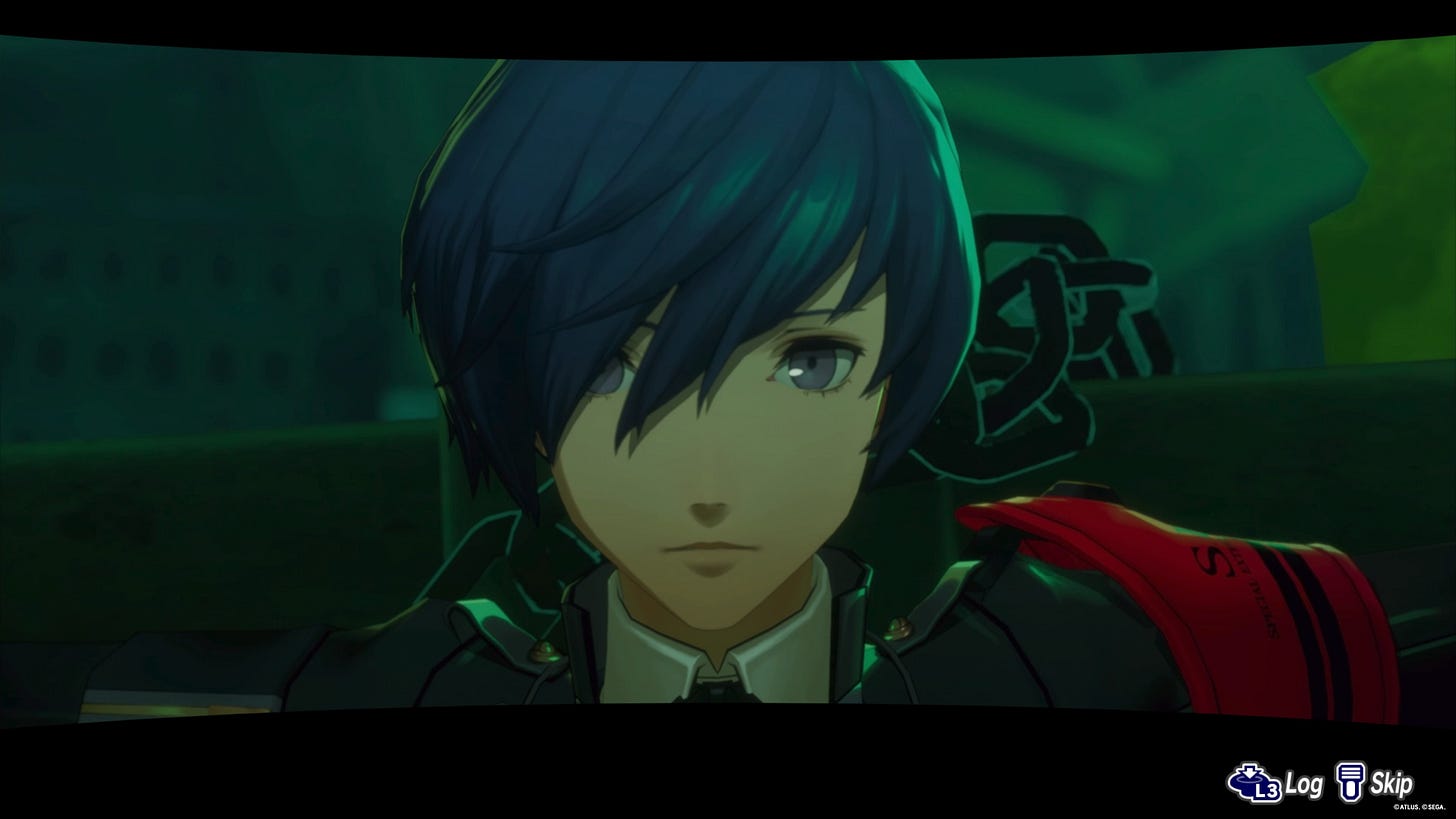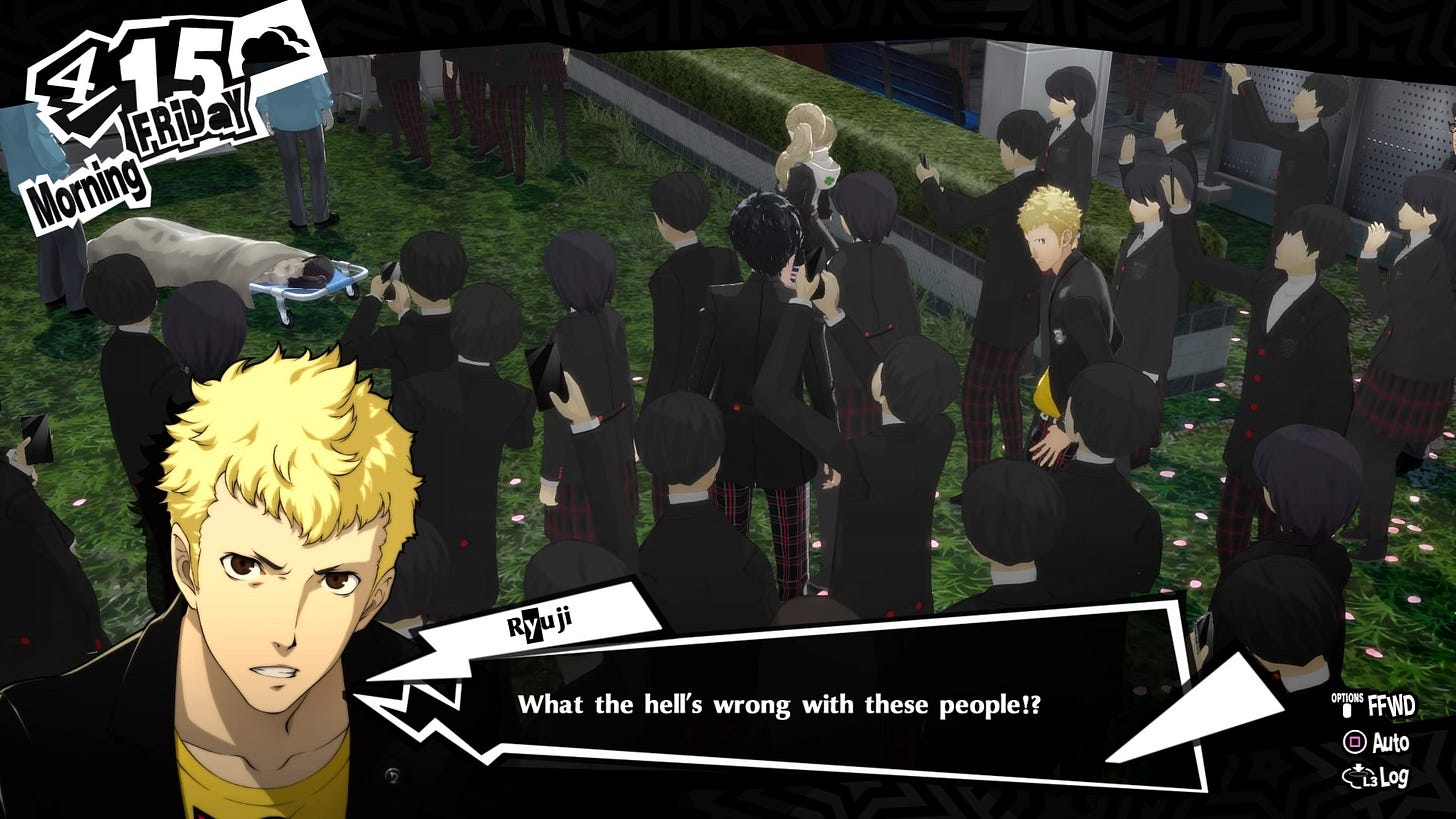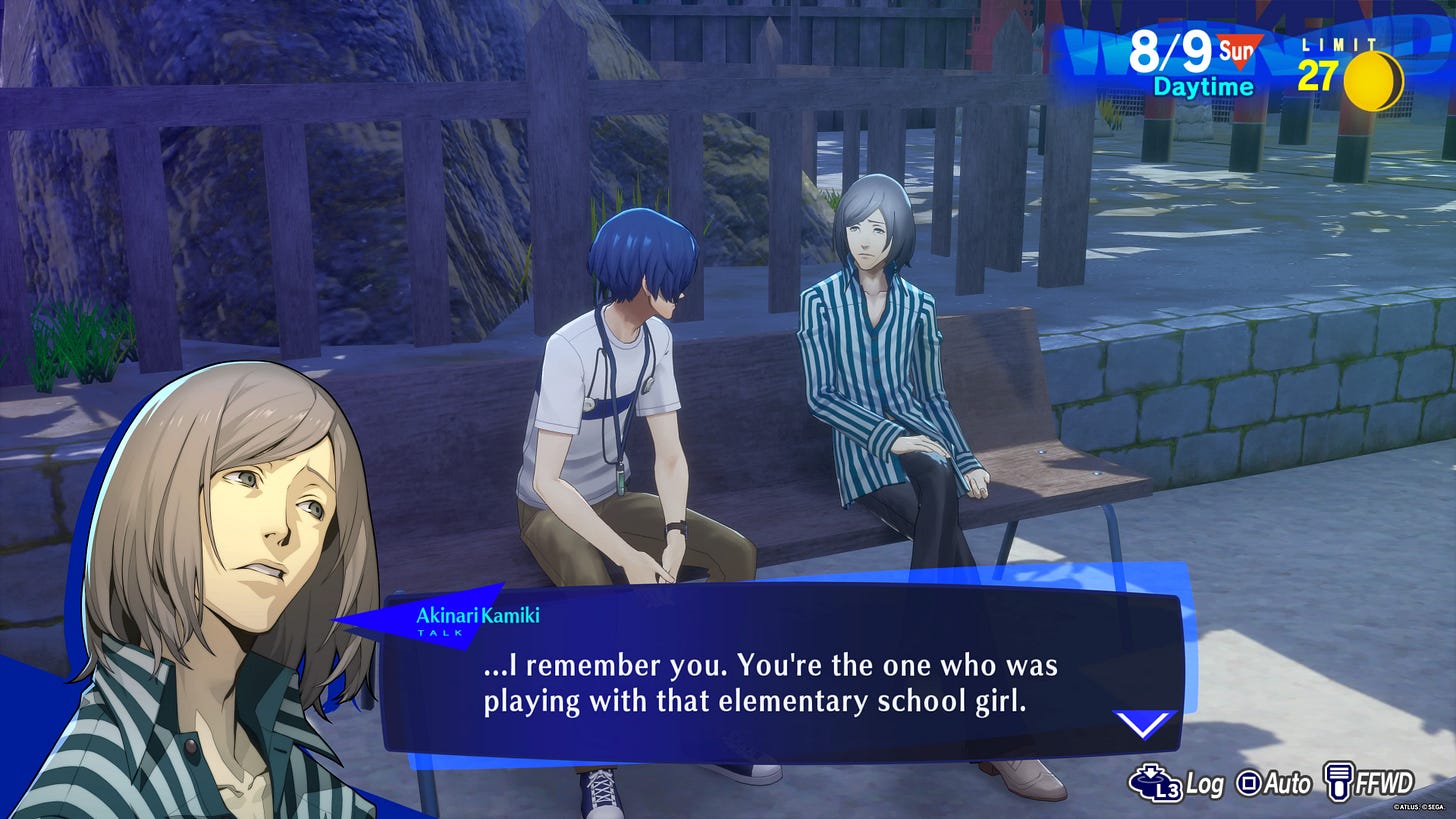I learned how fun a Persona game can be with Persona 5. Like many others, I had heard about the games but never got to play the previous ones – from the fact I barely understood English to not finding or having the money to buy them, there were many reasons preventing me from starting these games. Persona 5 came at the right moment in my life. I wasn’t going through an emotionally turmoiled moment though. I bought Persona 5 – the PS4 edition – during a quick sale a retailer was running one week before the winter holidays started. For the next month, I was free to play as many hours of games as I wanted and ignore all the pages I should be writing for my Master’s while using the argument that I was on vacation. There’s no better scenario for you to start a long game.
Back then, Persona 5 was already big, but in the next few years, Atlus would establish itself as one of the major Japanese studios, and Persona 5 its strongest horse in the race. Released in 2016, Persona 5 has not only received one upgraded version, Persona 5 Royal, in 2019 but also an official sequence – Persona 5 Strikers – and a spin-off – Persona 5 Tactica. More recently, it has received another spin-off named Persona 5: The Phantom X. And let’s not start talking about Persona 5’s main character, Joker, among the Super Smash Bros’s roster of fighters, or Sony including Persona 5 as part of the PS Plus Collection, a selection of major titles from the previous generation’s library – More recently it has become the only Persona title to make the Eurogamer 100 list of games.
Amid the process of unfolding Persona 5 into sequences and spin-offs, Atlus re-released Persona 4 Golden on June 13, 2020, and Persona 3 Portable on January 19, 2023. I played both. I can’t forget the excitement of hitting the Buy button on Persona 4 Golden’s Steam page after watching the official announcement made during the PC Game Show. Although I didn’t play P3P exactly when it came to PC, I rolled its credits before Microsoft removed the game from Game Pass at the end of 2023.
Now, in hindsight, when I get myself thinking about Persona games, after having played Persona 5 and Persona 5 Royal, I’m always going back to the uniqueness of Persona 3 Portable. How playing it felt distinct, not in terms of design or graphics, but of mood. This characteristic was inherited by the portable version of the original game and we can still find it in Persona 3 Reload, the remake released in 2024, although it’s diluted by the flashy combat animations and updated graphics – a fair criticism the game received from reviewers.
The Persona games have been following a formulaic narrative structure, made around the idea of a group of teenagers who want to make the world a better place by using their power to invoke material representations of their psyche. Although they all share this initial framework, they offer different experiences. The nature of the problem they are facing is, however, ontologically different.
The most recent of the main line games, Persona 5 was developed in a more politicized world, where social problems, from economic inequality to postcolonial power structures, aren’t accepted anymore as a naturalized aspect of day-to-day life. Revolution against a society structured for the benefit of the richest is a sentiment shared by many now. A moment of leftist influencers. Political debate became a popular language and young people started to address the many levels of their lives through these lenses. Such desire is represented by making the Phantom Thieves fight against pedophile teachers and corrupt politics, manifestations of a politically rotten world.
As the Phantom Thieves learn about their desires, they unmask the society around them. Alongside the group, we see how people take advantage of their position, their money, and their status to abuse others. The game shows Joker being taken by the police in a situation where the truth has no weight, a scene that encompasses the social stench that goes deeper and deeper. Even so, despite how far the structures of power supporting these abusive figures go, the game never lets us drop out of the optimistic smirk of one who knows things will get better. Friendship power! We finish Persona 5 believing in making a better society for all of those who share the world with us.
Persona 3 does come with a group of teens eager to make things better, not for society necessarily, but for themselves. At the same time, the game is not interested in discussing the sorrows and problems on a social and political level. It takes a more introspective approach, asking where it hurts not as a person within a society, but as an aware animal living on a planet. Persona 3’s story and mechanics are centered around the weight of being aware of our existence. The game's DNA is a single-helix structure based on existential dredge.
Instead of fighting morally questionable men or inhuman institutions, Persona 3 makes us face the intriguing fact that, as living beings, we all die. We still fight some enormous interdimensional beings so don’t worry! But the game is about Death. This kind of existential meditation might sound naive for some – but what one should do as a teenager if not being naive about life? The realization of our mortality is a crucial moment in our lives. I remember thinking life was all a horrible joke since it had always been set to eventually come to an end.
I used to think like this because I considered Death as a destructive and negative force. However, by going this way, I believe I was ignoring the potential of Death, not as a biological condition, but as a concept in life. Death can be productive. Death is a force capable of making things move. This is exactly what happens in Persona 3. The group of teenagers in the game is touched by Death and forced to reflect upon it, making them enroll in SEES as an answer to whatever questions come up to their minds.
Seeing the positive side of Death doesn’t mean closing our eyes to the pain that comes with it. In addition to the main quest, the story of Akinari Kamiki, the Sun Social Link, is the most representative of this. We meet them in the park and it doesn’t take long for us to discover they are sick. Progressing the relationship with them involves remembering when Akinari appears in the park, traveling there at the right moment of the day, and understanding who they are to select the best dialogue options. It also involves seeing their last days. Listening to their final words. Becoming friends with Akinari means witnessing them starting to write. And what is writing if not a silent request to stay alive?
We all should play Persona 3, not to abandon the optimistic ideals we might have learned from Persona 5, but to be touched by a story true to its own beliefs. To play Persona 3 is to open yourself to experience the bittersweetness of the encounter between the possibilities and the finitude of life that Death represents.







